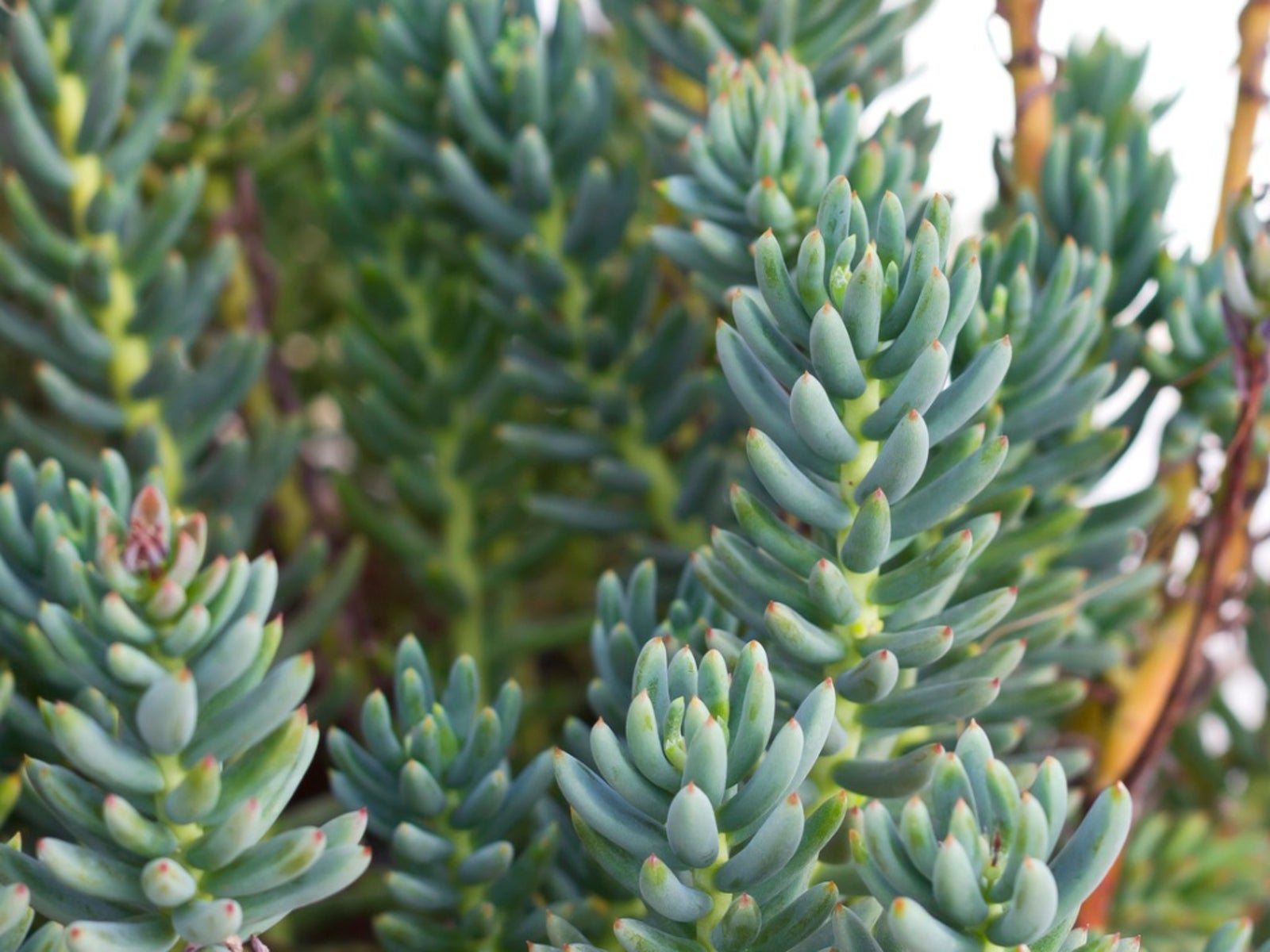Turquoise Tails Blue Sedum Info: Tips On Growing Turquoise Tails Sedum


Busy gardeners are always on the lookout for easy to grow plants. Growing turquoise tails sedum is one of the most trouble-free plants for ornamental landscaping. It is hardy in United States Department of Agriculture zones 5 to 10 and a proven winner in perennial beds, borders, containers, and rockeries. Read on to learn more.
What is Turquoise Tails Sedum?
Succulents are noted for their adaptability, ease of care, and wondrous forms and tones. Turquoise tails blue sedum is a cultivar that provides all these traits with deer and rabbit resistance and drought tolerance. What is turquoise tails sedum (Sedum sediforme)? It is a past Plant Select Waterwise winner with years of landscaping excellence ahead of the sedum. As a Mediterranean plant, it is suitable for climates with hot, sunny summers and cool winters. There is very little to learn about how to grow turquoise tails sedum. This species is pretty much ready to plant and enjoy. The plant only grows 4 to 6 inches (10 to 15 cm.) tall with a 12-inch (30.5 cm.) spread, but it’s hardly a shy, little beauty. This sedum produces spikes of layered, thick, pad-like foliage with attractive, blue-green coloring. The thick leaves are a feature of many succulents, where moisture is stored for periods of drought. From May to June the plant will flower, bearing sweet little clusters of starry yellow flowers. Over time, the plant mounds on itself in a dense clump of the plump leaves. Turquoise tails blue sedum is un-matchless for low maintenance and remarkable versatility.
How to Grow Turquoise Tails Sedum
Turquoise tails is an heirloom perennial succulent. Like most succulents, it is easy to establish from purchased plants or from cuttings. Division of the plant results in vigorous new plants and even the leaves may root and eventually produce new specimens. Over time, broken bits of the plant will establish and the original area can become delightfully covered in the blue-green leaves. It is a slow-to-grow ground cover, but a tough cookie once established. You may also try growing turquoise tails sedum from seed, but it takes several years to make an appreciably sized plant.
Caring for Sedum Turquoise Tails
One of the biggest enemies of succulents is too much water. That is not to say the plants don’t need water, but they cannot tolerate boggy soils or those that do not drain. Mix in compost or other organic matter to enhance nutrient content and percolation. In clay soils, add some sand or other gritty matter to loosen the earth. Turquoise tails sedum requires full sun but it can tolerate light shade. Succulents do not usually need extra feeding, especially those in-ground, but container plants benefit from liquid houseplant food (diluted) and added during the water cycle in spring. Reduce watering in winter when the plant is dormant. Turquoise tails sedum does not need pruning and has few disease or pest problems.
Sign up for the Gardening Know How newsletter today and receive a free copy of our e-book "How to Grow Delicious Tomatoes".

Bonnie Grant is a professional landscaper with a Certification in Urban Gardening. She has been gardening and writing for 15 years. A former professional chef, she has a passion for edible landscaping.